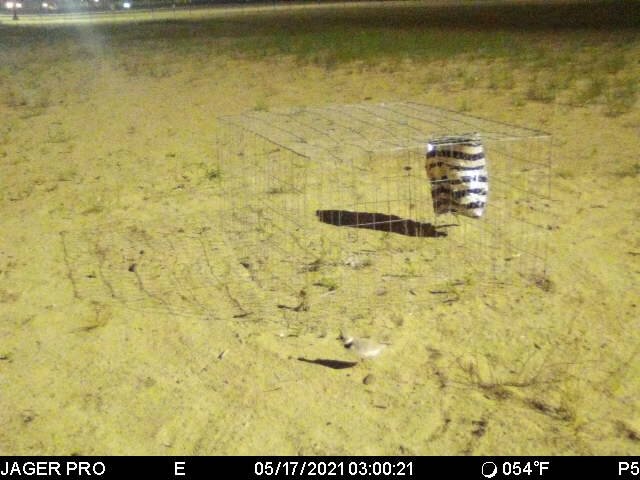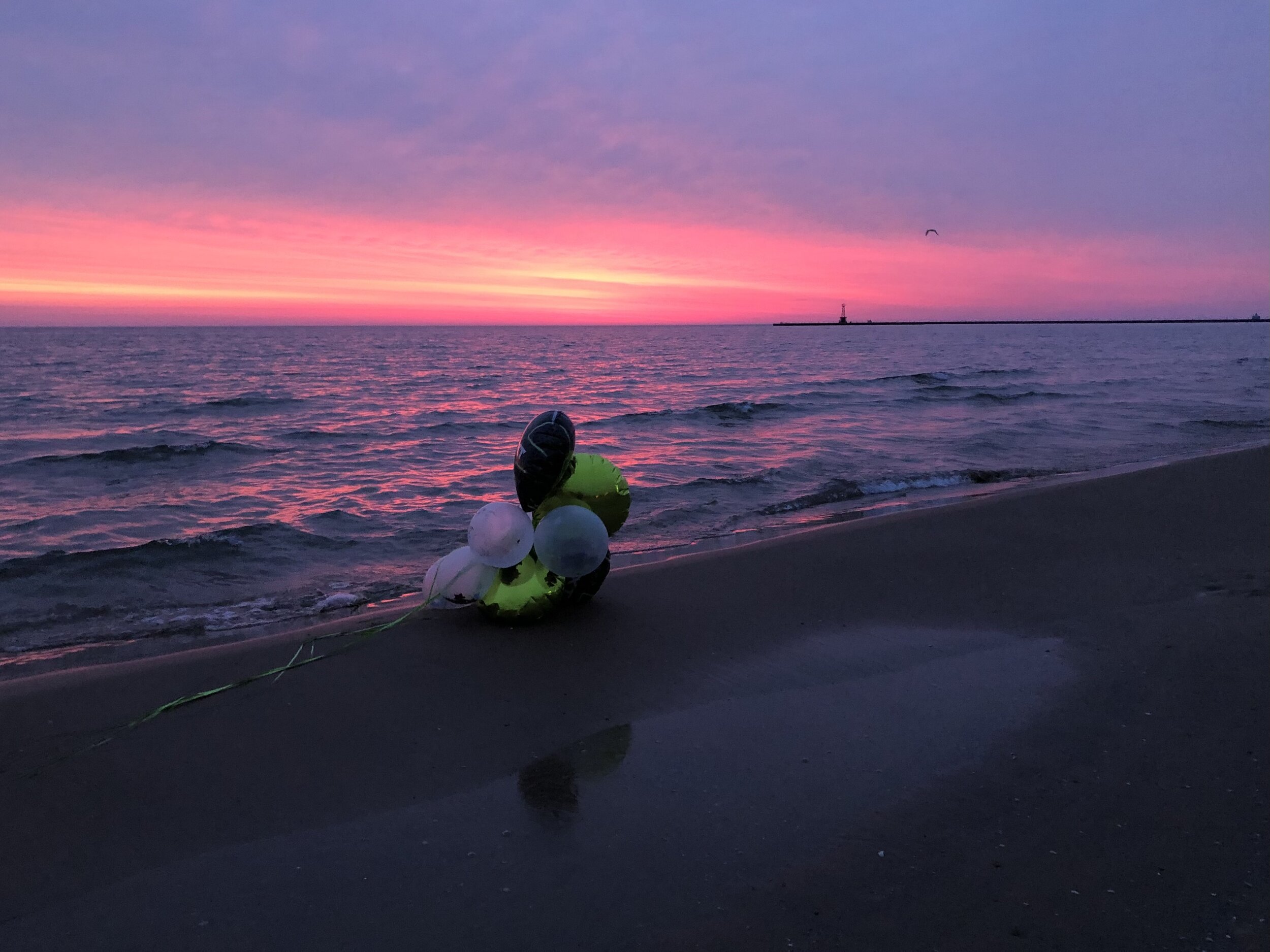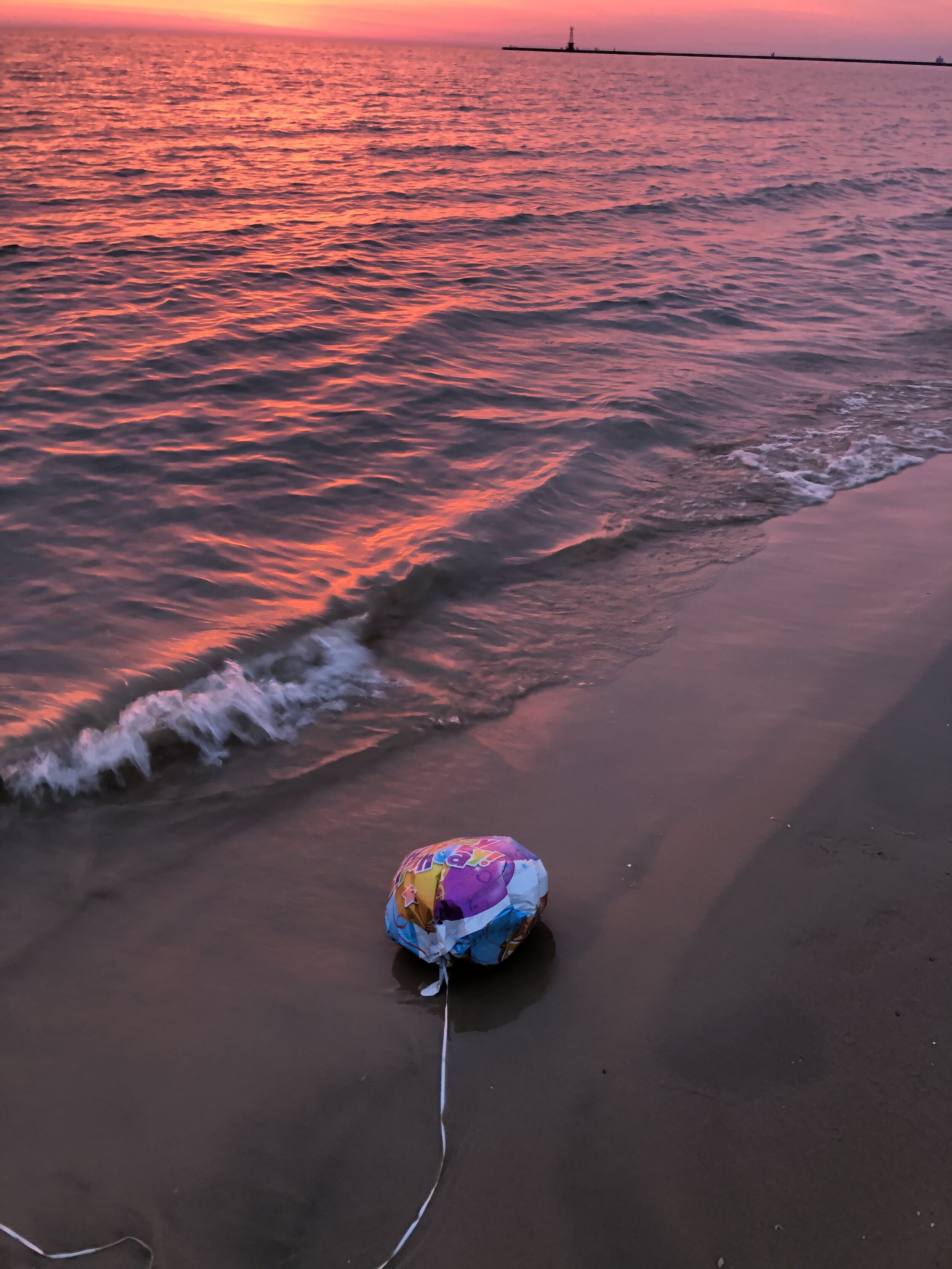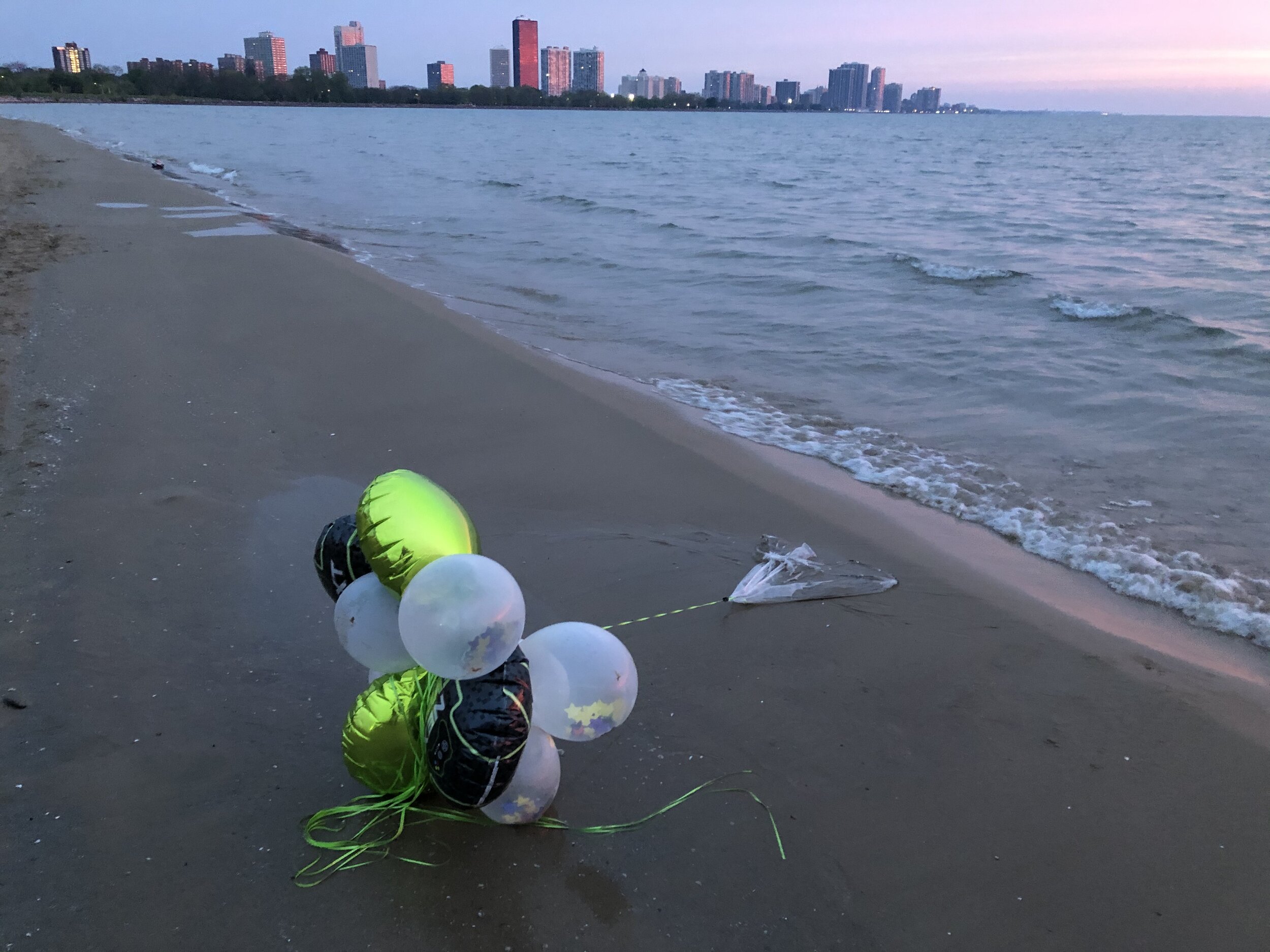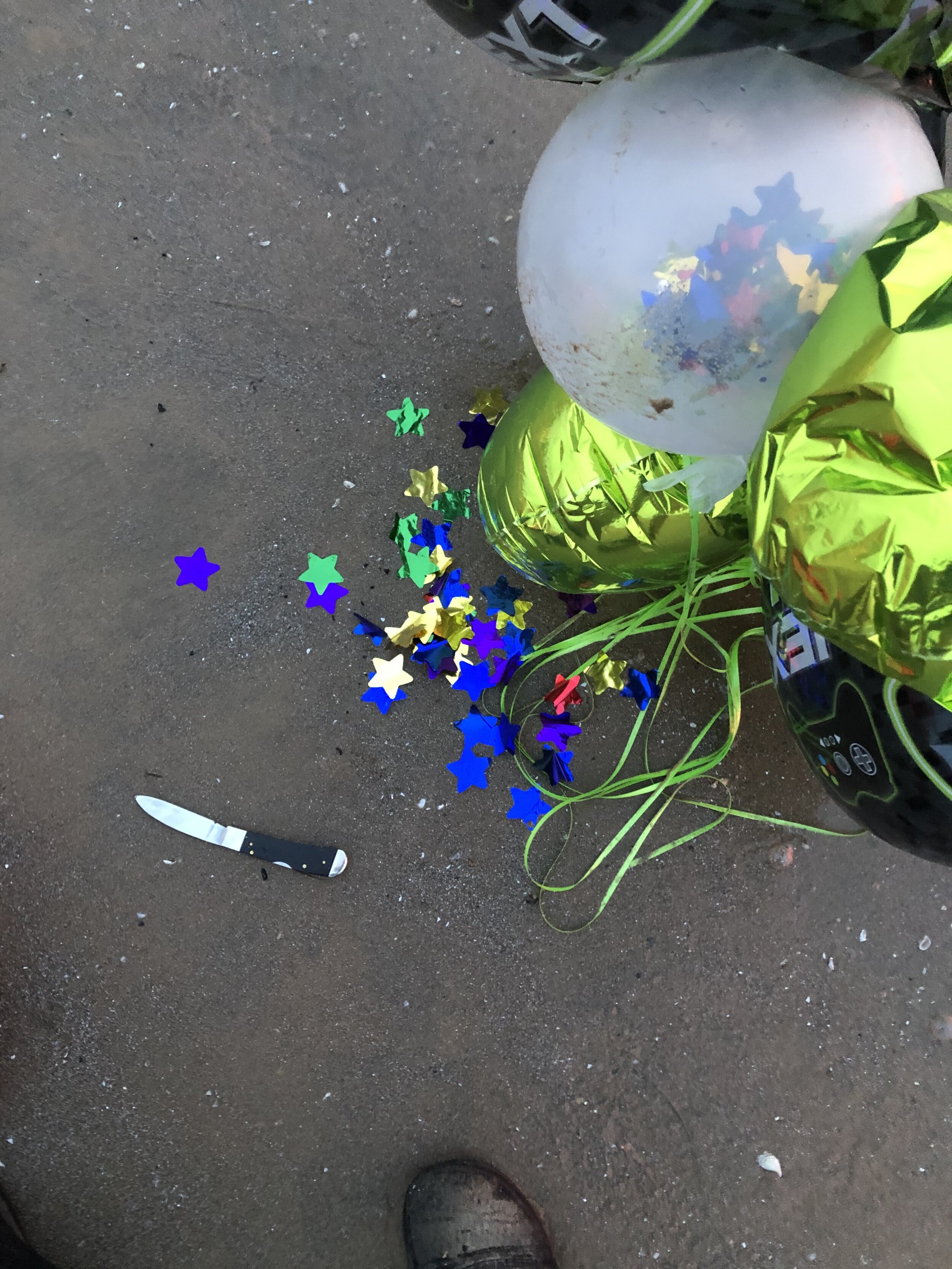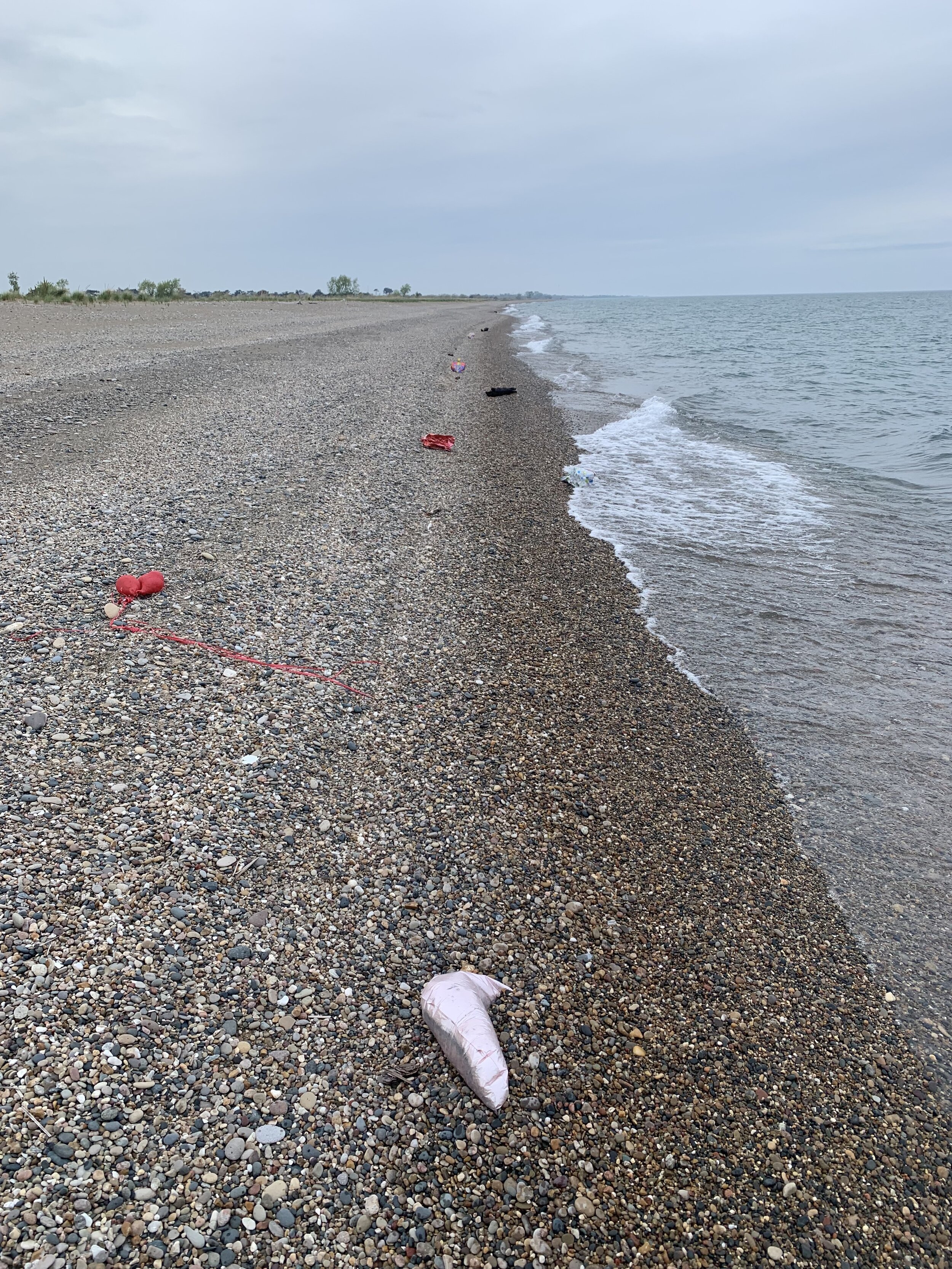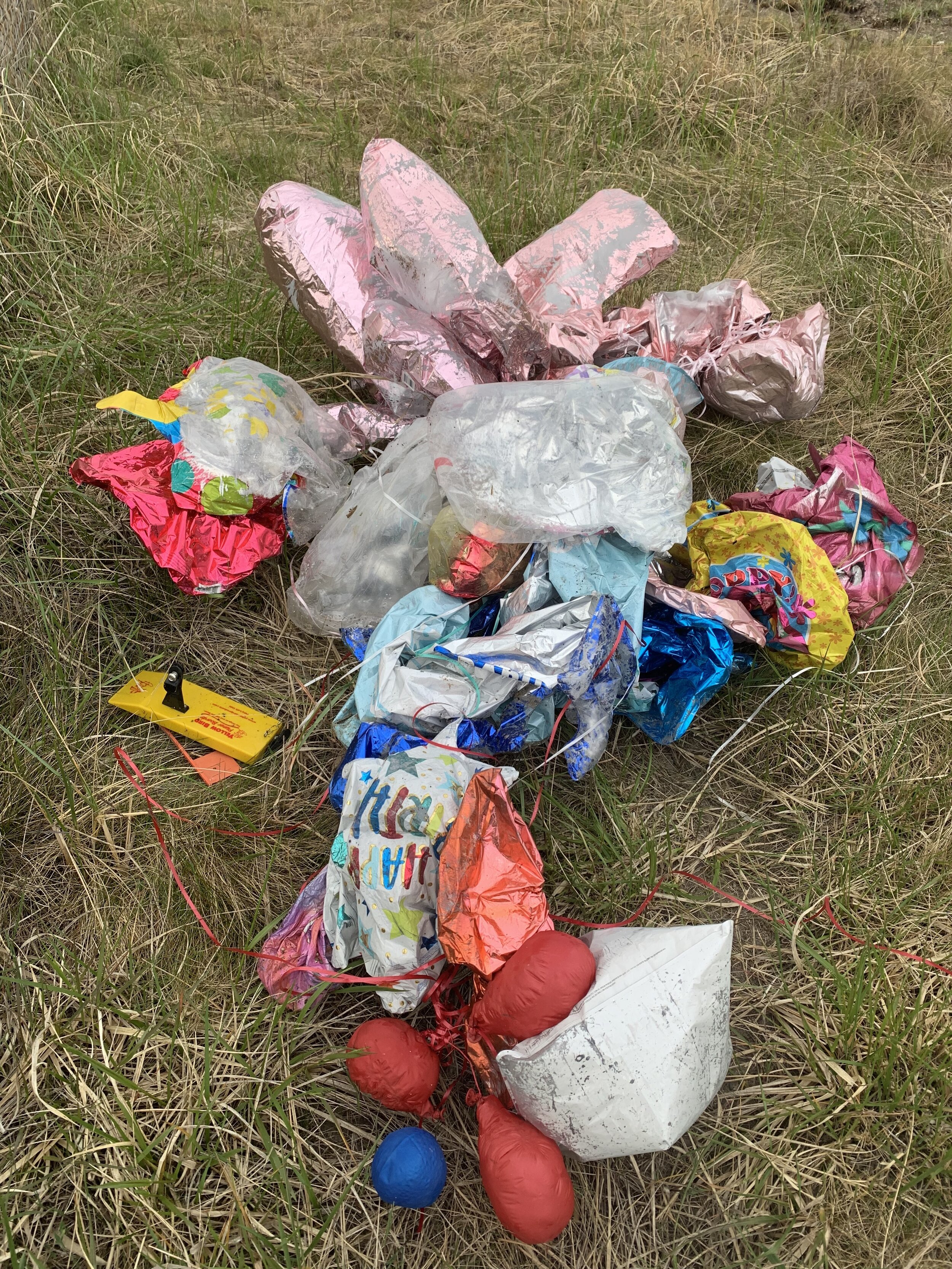A balloon scare
A USDA surveillance camera captures a Chicago Piping Plover scared off the nest by a celebratory balloon.
When we celebrate our loved ones’ birthdays and successes, we often turn to balloons to express our happy feelings, but would you still choose balloons if you knew they might later hurt or kill wild animals?
“They are biodegradable,” is the response often received when one expresses concerns about balloons.
Unfortunately, they don’t just magically degrade and disappear. All celebratory balloons, be they latex, biodegradable, mylar or otherwise, have the potential to pose a significant threat to wildlife.
This is not some far off threat but one that was brought very close to home recently when in the early hours of May 17, surveillance cameras installed by the USDA to observe Monty and Rose’s nest were triggered by motion near the nest. The photos revealed that the incubating Piping Plovers were off the nest leaving the eggs exposed to the elements, with a mylar balloon bumping against the protective wire exclosure.
Louise Clemency with the Fish & Wildlife Service, and one of the Chicago Piping Plovers guardian angels, sprung into action. By 4:30 am she was on the scene, removed the balloon and properly disposed of it.
The incubating plovers returned to the nest and continued incubation immediately following the balloon’s removal. We can confirm the incubating Piping Plovers were off the nest because of the balloon. We do not know whether the incident will have a long-term deleterious effect on the eggs. What we do know is that the balloon should have never been there.
That same morning Louise picked up additional balloons along Montrose beach (see Louise’s photos below). One of these balloons, when punctured, sprayed mylar bits all over the beach, which had to picked up one by one.
Brad Semel, with the Illinois Department of Natural Resources, and one of the other Piping Plovers guardian angels, is no stranger to the threats balloons pose to important habitats such as these balloons collected at Illinois Beach State Park (see Brad’s photos below) the same weekend. Areas critical for migrating shorebirds, and where plovers have nested in previous years, were made unavailable due to large numbers of balloons wildly bouncing about along the lakefront. Brad has numerous sobering accounts of dead birds, their legs and bodies entangled in balloons. Even more disturbing is the fact that as these balloons break down over time, what is left behind are microplastics, tiny fragments of petroleum products that will be ingested by aquatic organisms and increasingly concentrated in animals further up the food web. Microplastics are a major and growing concern in the Great Lakes, oceans and other waterways worldwide.
The data on balloons and their nefarious effects on wildlife is overwhelming and should prompt us to seek alternate forms of celebration. Balloons are so 20th century anyway!
We’re calling on everyone to please be a leader in their community, saying no to celebratory balloons and being a spokesperson advocating against their use. It is only through personal stories such as this one that we can really bring the message home. Share this story broadly to help people understand how such a small everyday choice can make all the difference for wildlife everywhere.

